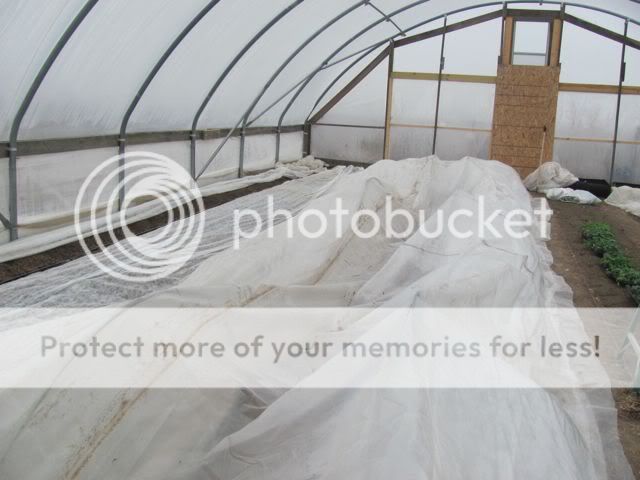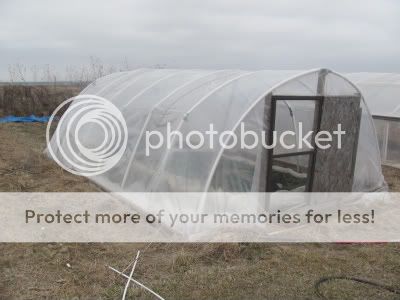To all my RVP customers, I wanted to share where all your produce is coming from this fall and winter. Want to learn more,
www.rvp.locallygrown.net My fall and winter garden consists of 3500 square feet of high tunnels and 1000 square feet of low tunnels.
Here is Hoop A
From left to right, Radishes, Beets, Swiss Chard, Spinach, Haikuri Turnips, Some left over broccoli, Lettuce, Napa Cabbage, Joi Choy, Red Choy, Tatsoi, Longevity (a type of tatsoi I guess), and Arugula.

They all still need mini hoops and row cover to cover them, but that is on the to do list.
Hoop C
My most mature crops and most recently planted.
Left to right, Lettuce, Kale, Spinach, Under the cover Green onions, Bok Choy and Napa Cabbage, Freshly Planted Haikuri Turnips and Carrots

Hoop D
This building grew Bell peppers and Cherry Tomatoes this spring and summer. I tore out the cherry tomatoes. Too overgrown and slowing production. The bell peppers are great. They are loaded and I have been picking bunches every week for the Farmers Markets.
Outside rows are bell peppers and under the row covers I have spinach and lettuce. I just transplanted the 250 plus lettuce plugs yesterday and the spinach is coming up or getting its true leaves. I still have grasshoppers in here and they love spinach. They don't mind the lettuce, but they will eat the spinach down.

On to the Movable Buildings. I have two movable buildings and I have crops growing outside and I am going to move the buildings over the crops soon. One probably this week and the other one once I loose the green beans or in about two weeks.
M1
Haikuri Turnips, Beets, Carrots, Carrots, Haikuri Turnips

M2 Has the same crops growing in it as M1.

M1 also has green beans growing inside.

Low Tunnels Broccoli and Cauliflower.
I have over 400 broccoli and cauliflower planted. They will go under row cover soon. I have to get a lot of other stuff done first!


The first low tunnel hoop.

Brussel Sprouts
They go planted too late, but we are going to see what happens.

Last outside planting of Green Beans.
This was a last second Hail Mary Planting. I have rinsed the frost off of them once and I have picked 40 pounds of beans off of the first picking. I am hoping to get 1-2 more pickings!


Fall and Winter Garden






















